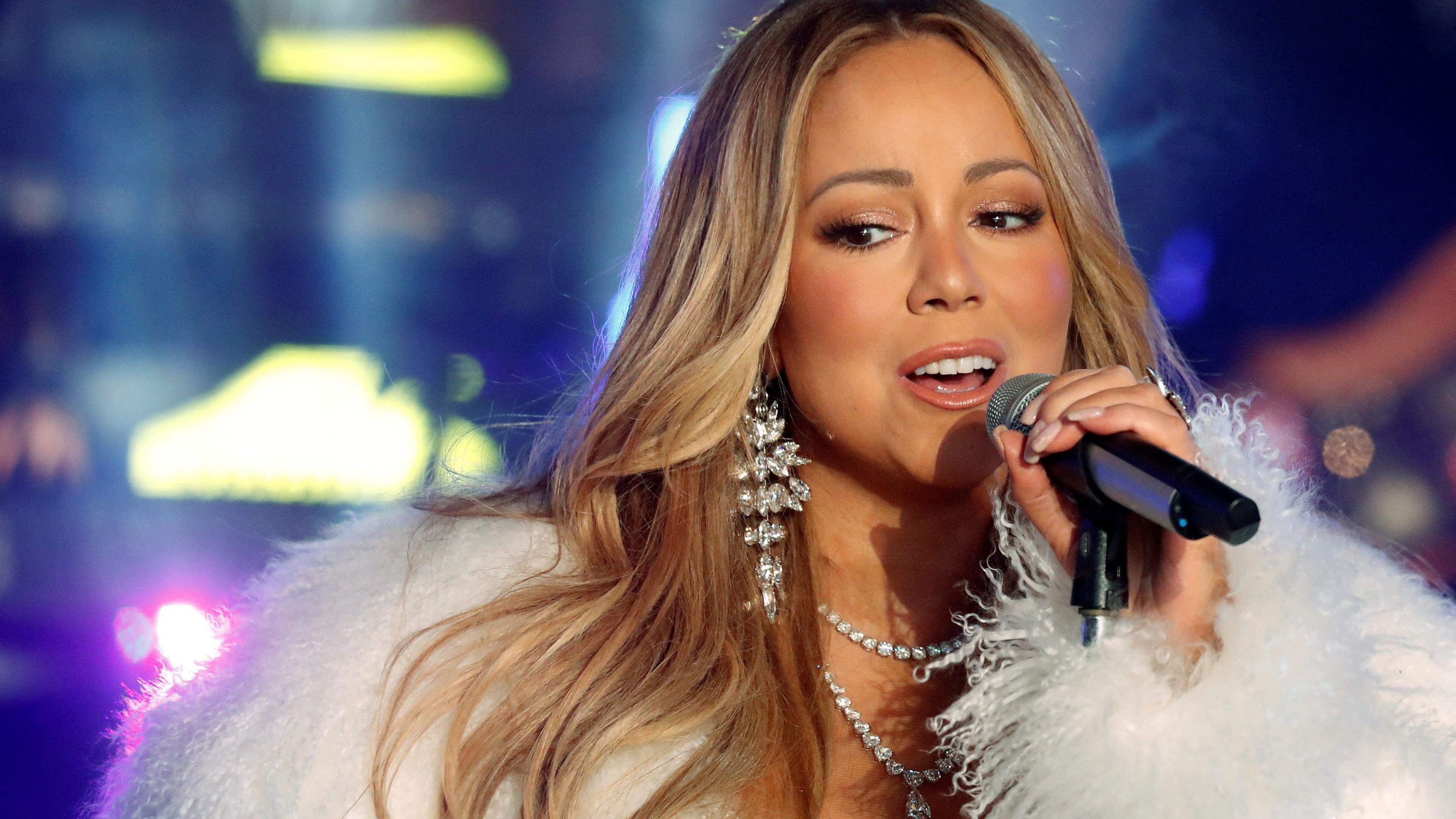Scientists use karaoke to find cause of blushing

One of the difficult-to-sing songs was Mariah Carey's All I Want For Christmas Is You
- Published
Ever wondered why your cheeks redden when all eyes are on you?
Turns out blushing is a spontaneous emotional reaction, instead of a result of cognitive self-reflection, new research published on Wednesday suggests.
In a bid to trigger blushing in order to study its cause, researchers from the University of Amsterdam asked a group of 16 to 20-year-old females to sing karaoke in front of a camera, and then made them watch a playback of their performances.
The findings published in the Proceedings of the Royal Society B journal, external show that blushing was more intense when participants watched themselves singing compared with watching others sing.
Milica Nikolić, a developmental psychologist from the university’s Institute for Child Development and Education and lead author on the study, had already investigated blushing as a physiological measure of young children’s emotions in social settings.
“I got interested in what exactly triggers blushing - is it thinking about what other people think of us, or is it more an automatic and spontaneous reaction to social exposure?” she asked.
This question posits the two main theories on what causes blushing. The first proposes that complex cognitive processing, such as self-reflection and self-awareness, acts as a trigger, while the latter argues blushing is a rapid and spontaneous emotional response.
To answer this question, Ms Nikolić’s team put people into a functional magnetic resonance imaging (fMRI) scanner and evoked blushing while measuring their brain activity.
The participants were a group of 40 females in their late teens - an age where there is a “heightened sensitivity to social evaluation and self-awareness” - recruited from in and around Amsterdam.
The study did not intend to only focus on women, but the volunteers ended up being female.
People with varying social anxiety were recruited based on answers they gave in a questionnaire. On signing up for the study, volunteers were not told they would be singing karaoke so as to not limit the types of people registering.
Participants were first recorded belting out renditions of four songs deliberately chosen for their difficulty to maximise embarrassment (and therefore, blushing potential), including Disney Frozen’s Let It Go and Mariah Carey’s All I Want For Christmas Is You. Participants then watched a video of themselves singing, and another of a professional singer who they were told was another participant with similar singing ability.
While watching the videos, the participants had their brain activity recorded to detect changes to blood flow in the brain. The temperature of their left cheek was also continuously measured to assess their blushing.
Ms Nikolić explained the researchers had two ideas: Either blushing is evoked by thinking about others' perception of us, which would activate brain areas involved in mentalizing, or it is evoked by more basic processes such as emotional arousal and attention to the social situation.
To the researchers' surprise, brain regions involved in mentalizing were not activated. Instead, they found that when participants blushed watching their own performances, there was activity in regions of the brain involved in emotions.
This implies blushing is a spontaneous emotional response that comes from being socially exposed and does not require cognitive processing, the study said.
Ms Nikolić explained that blushing "may have important functions" and alerts people that there is something relevant that could affect their social status.
Since this study only had female participants, whether males would react in the same way remains an open question, Ms Nikolić said. Studies in adults show that women may be more easily embarrassed and report to blush more easily, she said.